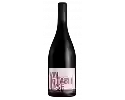
Winery CastelmaureThelma & Louise
In the mouth this red wine is a powerful with a nice balance between acidity and tannins.
This wine generally goes well with beef, veal or pasta.
Taste structure of the Thelma & Louise from the Winery Castelmaure
Light | Bold | |
Smooth | Tannic | |
Dry | Sweet | |
Soft | Acidic |
In the mouth the Thelma & Louise of Winery Castelmaure in the region of Languedoc-Roussillon is a powerful with a nice balance between acidity and tannins.
Food and wine pairings with Thelma & Louise
Pairings that work perfectly with Thelma & Louise
Original food and wine pairings with Thelma & Louise
The Thelma & Louise of Winery Castelmaure matches generally quite well with dishes of beef, pasta or veal such as recipes of roast beef in a crust (onions & mustard), spaghetti carbonara or veal liver in vinegar.
Details and technical informations about Winery Castelmaure's Thelma & Louise.
Discover the grape variety: Riesling italien
We do not know exactly where this grape variety comes from. It can be found in Austria, Romania, northern Italy, Croatia, Serbia, Hungary, Bulgaria, the Czech Republic, Slovakia, Russia, etc. It is practically unknown in France. In Spain, Borba is said to be identical to the Italian Riesling.
Last vintages of this wine
The best vintages of Thelma & Louise from Winery Castelmaure are 2019
Informations about the Winery Castelmaure
The Winery Castelmaure is one of of the world's great estates. It offers 66 wines for sale in the of Corbières to come and discover on site or to buy online.
The wine region of Corbières
Corbières is an important appellation in the Languedoc-roussillon">Languedoc-Roussillon region of southern France. It is one of the best known and most productive appellations in the Languedoc. The Corbières vineyards produce large quantities of red and rosé wines, as well as a growing number of white wines. The reds are the strongest Part of the appellation; they are reputedly Rich and herbal, made from Grenache, Syrah, Mourvèdre, Lledoner Pelut and Carignan.
The wine region of Languedoc-Roussillon
Languedoc (formerly Coteaux du Languedoc) is a key appellation used in the Languedoc-Roussillon wine region of southern France. It covers Dry table wines of all three colors (red, white and rosé) from the entire region, but leaves Sweet and Sparkling wines to other more specialized appellations. About 75% of all Languedoc wines are red, with the remaining 25% split roughly down the middle between whites and rosés. The appellation covers most of the Languedoc region and almost a third of all the vineyards in France.
The word of the wine: SR
A company of harvesters and handlers who have pooled their equipment (press, vats, etc.).











